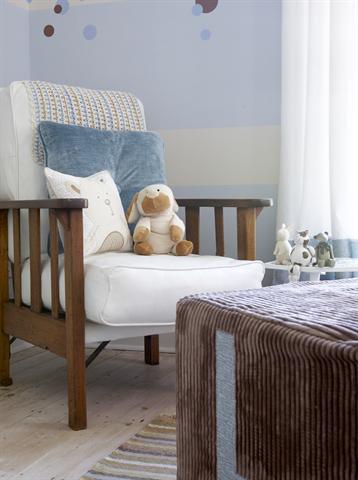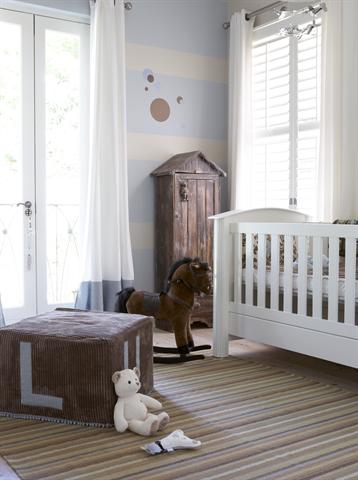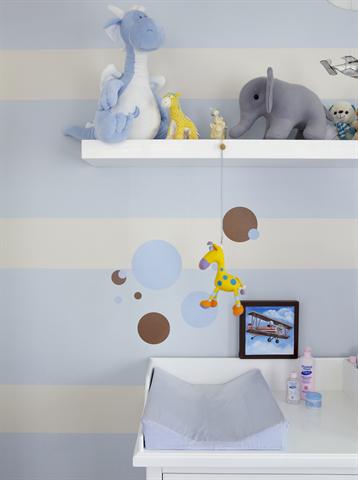Nurseries don’t have to be garish, toy-cluttered areas. Follow these tips to create a space which will be fun and comfortable for both mother and baby
It is tempting to pull out all the stops when decorating a nursery, but there are some practicalities to consider as children’s rooms must adapt to changing needs in a relatively short period. Before you get started, consider these points:

Opt for a scheme that will grow with your child
“A simple, subtle scheme has a calming ambience and the flexibility to grow with a baby to toddler and to nursery school,” says decorator Carien van Eeden from Revival Interiors. Her advice is to keep more expensive items, such as curtains and furniture, classic and simple, yet contemporary.
“Trendy designs come and go, so rather incorporate splashes of colour and fun elements by creating a focal wall with wallpaper or painted stripes, and by adding interesting smaller decor items. More affordable items, like scatter cushions, throws, wall decorations and lamps, can easily be changed as the child grows older,” advises Carien.
Choose appropriate furniture and sufficient storage
For the first few months, babies’ activities are limited to eating and sleeping, so the cot, change table and a comfortable chair for mom are essential items. Says Carien: “Choose a deep, sturdy cot with a slide-down side that will make it easier to lift your baby out. Some cots can grow with your child and be converted into beds.
“A chest of drawers can double up as a change area by adding a mat. This not only provides plenty of storage, but can also form part of the bedroom furniture as your child grows older.
A bed with large drawers underneath, wooden crates or wicker baskets on castors allow plenty of storage space for toys. “Book cases or floating shelves within reach of the changing area are great for essentials and eventually, as the child grows older, for books.”

Safety first
Accidents do happen in the home, so parents should remove all potential hazards. Decorator Lizette Sevenster from Renaissance Décor advises parents to choose furniture with rounded rather than sharp edges. “Always consider the height for functionality and safety. A cot should be sturdy and have a breathe-easy mattress that fits snuggly. A cot bumper is essential to prevent toes and fingers from bruising or getting stuck in gaps.
“All walls and furniture should be painted in a non-toxic, lead-free paint, in advance of baby’s arrival,” she says. Keep shelving above the change area clutter free to prevent items from falling on your baby.
“Toddlers’ toys should be within easy reach on well-secured shelves to prevent children from climbing onto furniture to reach their favourites,” adds Lizette. Windows can also be dangerous. If you don’t have burglar bars, secure them with temporary vertical bars (horizontal bars can become a ladder!) – an easy DIY weekend project.
Trends
“The trend is to decorate nurseries by reusing and renovating existing pieces,” says Lizette. Her tips include giving old furniture a new lease on life with paint techniques and creating a gallery wall with photo frames from recycled materials or pictures from a story book.
Other trends are modular and multi-purpose furniture that allow for an easy transition from baby to toddler to teen, like a cot that converts to a bed.


